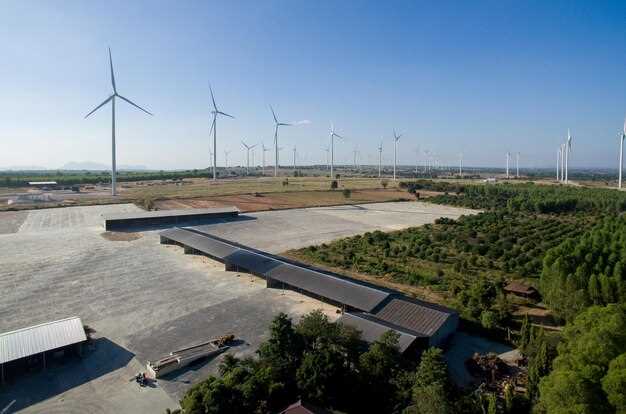
The rapid expansion of the electric vehicle (EV) market has led to a surge in the establishment of Chinese factories producing these eco-friendly vehicles. However, this growth raises critical questions about the genuine environmental impact of these manufacturing facilities. Are they truly operating in a way that prioritizes sustainability, or do they contribute to environmental degradation?
At the core of the discussion lies the debate over the eco-friendliness of production processes used in Chinese factories. While the end product–electric vehicles–promises to reduce carbon emissions compared to traditional gasoline-powered cars, the manufacturing process itself often relies on non-renewable resources and generates significant waste. Examining the entirety of the life cycle, from raw material extraction to production, is essential for understanding the ecological footprint of these vehicles.
Moreover, the reliance on coal-powered energy in many regions of China further complicates the narrative. Although the shift towards electric vehicles is a step in the right direction, the source of energy powering these factories plays a critical role in their overall environmental impact. As we delve deeper into this topic, it is essential to scrutinize both the advancements in technology and the environmental policies governing these Chinese production facilities.
Examining the Carbon Footprint of Chinese EV Manufacturing
The surge in electric vehicle (EV) production in China has positioned the country as a global leader in the EV market. However, the environmental implications of this rapid manufacturing expansion cannot be overlooked. The carbon footprint associated with Chinese EV factories largely stems from several key factors, including energy sources, raw material extraction, and supply chain logistics.
Most Chinese factories rely heavily on coal as their primary energy source, contributing significantly to greenhouse gas emissions. Despite increasing investments in renewable energy, the transition is gradual, and many factories continue to operate with fossil fuels. The reliance on coal not only affects the manufacturing process but also negates some of the environmental benefits of using EVs, which are promoted as cleaner alternatives to traditional vehicles.
Furthermore, the extraction of crucial raw materials, such as lithium, cobalt, and nickel, often involves environmentally damaging mining practices. These materials are essential for the production of batteries in Chinese EVs. Mining activities can lead to biodiversity loss, soil degradation, and water pollution, further exacerbating the overall carbon footprint of the EV supply chain.
The logistics involved in the distribution of components and finished vehicles also contribute to emissions. Factories are often located far from resource-rich areas, necessitating extensive transportation networks. The cumulative impact of these factors raises questions about the sustainability of manufacturing processes within the Chinese EV sector.
In conclusion, while Chinese EV factories play a critical role in the transition towards more sustainable transportation, the environmental costs need careful consideration. Addressing the challenges related to energy consumption, resource extraction, and logistics will be crucial in minimizing the carbon footprint associated with EV manufacturing in China.
Assessing the Use of Sustainable Materials in Chinese Electric Vehicles

The shift towards electric vehicles (EVs) has accelerated globally, with Chinese manufacturers at the forefront of this movement. A pivotal aspect of their production processes involves the integration of sustainable materials aimed at minimizing environmental impact. The use of eco-friendly materials in the manufacturing of Chinese EVs helps reduce carbon footprints and promotes responsible resource usage.
Many Chinese EV companies are now exploring innovative materials, such as bio-based plastics and recycled metals, to replace conventional components. This shift not only enhances the sustainability of vehicle production but also addresses the growing consumer demand for eco-conscious alternatives. For instance, some manufacturers have begun utilizing plant-based fibers in interior finishes, which lowers reliance on petroleum-based products.
Additionally, the battery production sector is seeing improved practices focused on sustainability. Manufacturers are investing in materials recycling processes that reclaim valuable components, such as lithium and cobalt, from old batteries. This not only mitigates waste but also conserves the finite resources used in battery production, setting a precedent for other industries.
While the progress is promising, challenges remain. The supply chain for sustainable materials often lacks transparency, and the environmental impact of sourcing raw materials must be critically evaluated. Ensuring that the extraction of materials, such as lithium for batteries, adheres to eco-friendly practices is crucial for maintaining the overall commitment to sustainability.
As Chinese manufacturers continue to innovate, the incorporation of sustainable materials in EV production will play a significant role in shaping the future landscape of eco-friendly transportation. The ongoing assessment of these initiatives underscores the importance of balancing technological advancement with environmental responsibility.
The Impact of Chinese EV Production on Local Ecosystems

The rapid growth of electric vehicle (EV) factories in China has raised concerns regarding their environmental footprint on local ecosystems. While the production of EVs is often positioned as a green alternative to traditional vehicles, the manufacturing processes involved can have significant ecological repercussions.
Chinese EV factories predominantly rely on mining for essential materials such as lithium, cobalt, and nickel, which are critical components for batteries. These mining activities can lead to habitat destruction, soil erosion, and water contamination. Moreover, the extraction process often occurs in ecologically sensitive areas, threatening local flora and fauna.
Another aspect to consider is the carbon emissions generated during the manufacturing process itself. While EVs produce zero emissions on the road, the factories that create these vehicles can emit substantial greenhouse gases if sourced from fossil fuels. Transitioning these factories to renewable energy systems is crucial for reducing their overall carbon footprint.
The waste generated by EV production also poses a challenge. Toxic materials used in battery manufacturing can contaminate local water sources and soil if not disposed of properly. Ensuring that factories adhere to strict waste management protocols is essential to mitigate potential damage to nearby ecosystems.
Nevertheless, the shift towards electric mobility can lead to positive outcomes for local ecosystems in the long term. By reducing reliance on fossil fuels, EVs can contribute to overall air quality improvement and lower global warming potential. The development of sustainable battery technologies, such as recycling and using less harmful materials, can further reduce the negative impacts of factory operations.
Ultimately, the environmental implications of Chinese EV production depend on balancing immediate industrial growth with sustainable practices. Continuous monitoring and regulation are necessary to ensure that the expansion of EV factories aligns with eco-friendly principles and protects local ecosystems from detrimental impacts.


